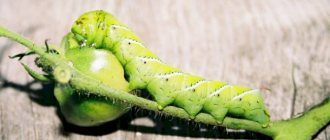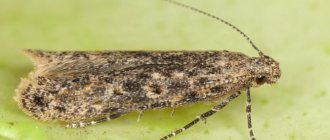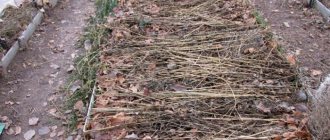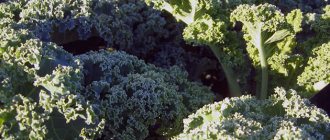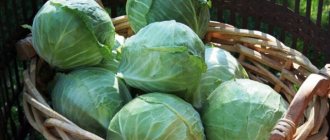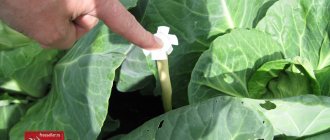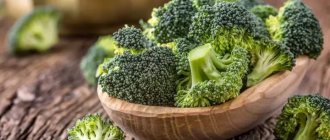The topic of our conversation is growing Chinese cabbage. The article concentrates and systematizes experience, knowledge and agrotechnical measures for the cultivation of this exotic crop. I hope that it will bring significant benefits to gardeners and gardeners.
Chinese cabbage (petsai) is a herbaceous plant of the Cruciferous family. Its tender, juicy, light greenish leaves form a loose head of cabbage (elongated round, oval or cylindrical) with an average length of 30-50 cm.
The birthplace of this culture is the Yangtze River Delta in China. Mention of it dates back to the 5-6th century AD. It was used as a vegetable plant. It spread through Korea to Japan and the countries of Indochina. In the mid-20th century, the Japanese developed commercial early ripening varieties and hybrids. In this regard, the culture has gained unprecedented popularity. Currently, it has been grown in almost all countries of the world. This cabbage is used in salads, soups, and side dishes. It is stewed, fried, salted, pickled, and used for cabbage rolls.
In China, Chinese cabbage is deservedly considered a source of health, youth and longevity. It is an affordable source of a large amount of useful substances that are 100% preserved throughout the winter. It contains:
- vitamins A, B1, B2, B3 (PP), B4, B5, B6, B9, C, E, K;
- minerals potassium, calcium, magnesium, sodium, fluorine, iron, copper, manganese, zinc;
- amino acids, organic acids;
- lysine, lactucin, which have important medicinal properties;
- a lot of fiber, which helps cleanse the body, etc.
Nutritional value of 100 g of raw product: proteins - 1.2 g, fats - 0.2 g, carbohydrates - 2.03 g. Energy value - 16 kcal.
The process of growing vegetables is not complicated, but there are a number of nuances that need to be paid attention to.
Beijing cabbage - growing and caring in open ground
Secrets of cultivation
In my gardening practice, there were two unsuccessful attempts to grow Chinese cabbage. In the first attempt, beautiful leaves grew, like burdocks. The heads of cabbage that I was looking forward to did not form. In the second, instead of heads of cabbage, arrows with peduncles appeared.
After studying many recommendations for growing this crop, my mistakes became clear to me. It turns out that there are two types of cabbage: Chinese leaf cabbage (pak choi) and Chinese cabbage (petsai).
The first mistake was that I bought the seeds of Chinese cabbage, which does not form heads. It is also rich in nutrients and is used for making salads and as an oilseed. Unlike head pak choy, the leafy pak choy has a groove on the seed.
The second mistake was that I did not take into account such important factors when growing petsai:
- for the formation of heads of cabbage, a short daylight hours is required (no more than 12 hours);
- The plant does not tolerate heat well; for the vegetable to fully develop, the air temperature should be within 15-22*C.
- Despite the fact that Beijing can withstand cold snaps down to -4*C, prolonged drought, frequent deterioration of weather conditions, and sudden temperature changes negatively affect the harvest.
If the above factors are not observed, the petsai bolts and produces a peduncle instead of a head of cabbage.
Main factors affecting yield
To get a good harvest of Chinese cabbage you need:
- Choose the right seeds;
- Consider the growing area;
- Comply with agrotechnical measures.
Currently, breeders have developed a large number of varieties and hybrids of this early ripening crop. According to ripening time (from sowing to fruit production) they are divided into:
- early - up to 45 days (“Richie F1”, “Cha-Cha”, “Vesnyanka”, “Manoko F1”, “Shanghai”);
- mid-season - up to 60 days (“Bilko”, “Granat”, “Wili F1”, “Brocken F1”, “Nika F1”, “YukiF1”, “Hydra F1”);
- late – up to 70-80 days (“Monument”, “Sentyabrina”).
When choosing seeds, you should give preference to varieties that are resistant to changes in temperature, diseases and bolting (flowering). It is most reliable to purchase zoned varieties and hybrids.
There are two ways to grow Pekinka: seedlings and non-seedlings. Residents of central and colder regions are better off growing seedlings. Direct sowing of seeds into the ground is suitable for the southern regions.
Considering the “whims” of the vegetable, the best time for sowing early cabbage seeds is the end of March and the beginning of April, when the daylight hours are not yet very long. To grow a second crop, seeds of mid-season and late varieties of this crop must be sown at the end of July and beginning of August, when the length of daylight hours has already decreased.
The land for growing "Beijing" should be well illuminated by the sun. Worthy predecessors and neighbors are onions, garlic, cucumbers, and carrots.
Planting rules for a good harvest:
- In autumn, the area should be watered with a solution of lime or dolomite flour (200 g per 10 liters of water), since the vegetable does not like acidic soils. In the spring, dig up and mulch so that the soil is loose.
- A week before sowing the seeds, cover the area with plastic film so that the soil warms up well.
- Draw rows with a slab at a distance of 40 cm from each other. In rows in a checkerboard pattern, make holes with a diameter of about 15 cm at a distance of 40 cm.
- In each hole, add a jar with a capacity of 0.5 liters of humus and a little wood ash, pour it well with warm water. Plant seeds 2 pcs. into one hole to a depth of no more than 2 cm.
- Dust the top with ash and make a mini-greenhouse: cover with film or a plastic cup. I cut off the bottom of a plastic bottle and bury it about 5cm into the ground. I leave the plug closed for now; later you can ventilate and water through it.
- After 7 days, shoots will definitely appear. When the plants take root and form two true leaves, I leave one strong sprout, and cut off the weaker one near the ground. I remove the bottle when the weather is steadily warm.
Such a shelter will retain moisture, protect the seedlings from cabbage weed, from cruciferous flea beetle, from wind and from changes in air temperature. In case of frosts or fairly cold nights, I install arcs and cover the bed with agrofibre.
Caring for Chinese cabbage:
- Peking cabbage will reveal its full potential and will delight you with a good harvest if it is properly cared for.
- This vegetable crop loves moisture and does not tolerate dry soil. Watering should be moderate and regular. Depending on weather conditions, watering can be done once a week, every other day or every day. For irrigation it is necessary to use water heated by the sun. It is best to water the vegetable in the evening by sprinkling, so as not to damage the root.
- Do not allow the formation of a soil crust around the plant; after each watering, it is necessary to loosen the soil to a depth of about 3 cm.
- Get rid of weeds regularly. They can be used to mulch cabbage.
- Fertilize no earlier than 14 days after emergence. Since Peking cabbage quickly accumulates toxins in the head, it is not advisable to use chemical fertilizers. It is better to make an infusion (2-3 days) from bird droppings or mullein, dilute it with water (in a ratio of 1:10) and water 1 liter at the root of each plant. I use an infusion of herbs (wheatgrass, nettle), diluted with water in a ratio of 1:5. I do this feeding 2 times. Spraying the vegetable leaves with a solution of boric acid and water (1-1.5 g per 10 l) will help in the development of the head of cabbage.
- If the daylight hours are long and hot, the beds must be shaded with covering black agrofibre.
- 3 weeks after germination, the cabbage can be slightly hilled.
- For insect pests, you can use a light non-woven covering material or dusting with ash.
- In order for the heads of cabbage to form faster, the leaves must be collected in a bunch and secured with a loose elastic band.
How to store
As soon as the heads of cabbage have become dense and elastic, they are cut off. When cutting, at least 2-3 covering leaves are left at the rosette. Spring and summer harvests are not stored for long. Cabbage is used to prepare salads, first and second courses. Harvested in the fall can be stored until spring.
The requirements for the premises are simple. The air temperature should not rise above 5 °C and fall below 0 °C. The air should be moderately humid. To prevent the heads of cabbage from drying out, during storage they are wrapped in several layers of cling film and placed in boxes.
Basics and secrets of the Chinese cabbage harvest when grown in a greenhouse
Chinese cabbage is popular among gardeners not only for its delicate taste and beneficial properties, but also for its rapid ripening and high yield.
For satisfactory development of this vegetable you need:
- short daylight hours;
- temperature range from +13 to +22*C;
- protection from wind due to weak root system;
- protection from pests.
Therefore, growing Chinese cabbage is considered advisable either in early spring or late autumn.
The greenhouse allows you to artificially create and regulate the required conditions. Growing a very early or very late harvest of this vegetable in a heated greenhouse is especially promising.
The soil in the greenhouse should be fertile, neutral and light. Before planting, the soil must be treated with steam or a weak solution of copper sulfate.
For growing vegetables in a greenhouse, seeds of hybrids with the shortest growing season are best suited. For spring cultivation, the best hybrids are “Spring Beauty F1” and “Spring Jade F1”. For late autumn sowing (early September), autumn hybrids “Sentyabrina F1”, “Autumn Beauty F1”, “Kingfisher” are suitable.
In a greenhouse, this crop is grown both by seedlings and without seedlings.
Seedlings are grown in plastic cups or peat pots. The seedlings are transplanted into a greenhouse at the age of 20-25 days, when 4-5 true leaves have grown.
In heated greenhouses, already in early March, you can sow pekin seeds in rows directly into the ground. In unheated greenhouses, seeds should be sown in late March and early April.
How to sow:
- To do this, holes are made in the row at a distance of 30-40 cm, and a distance of 40-50 cm is maintained between the rows.
- The holes are well shed with warm water and seeds are planted in 2-3 pieces. into the soil to a depth of 2 cm.
- After sowing, maintain the temperature at +20*C. When the shoots appear, gradually lower the temperature to +10*C and maintain it for 5-6 days. Next, maintain the temperature during the day +20*C, at night +16*C.
- In addition to the temperature regime, as the soil dries out, regular moderate watering with warm water is required. Excessive watering is detrimental to it.
- The beds must be constantly loosened and weeds removed.
Peking cats are very prone to nitrate accumulation. Therefore, it is best to fertilize plants with infusions of herbs (nettle, wheatgrass, etc.). To combat pests, you can use wood ash, tobacco dust, garlic infusion and in no case use chemicals.
Following these recommendations, you will definitely get a rich harvest of this tasty and healthy vegetable.
Diseases
Due to improper watering regime, cabbage suffers from fungal diseases. Most often the crop suffers from blackleg, clubroot, powdery mildew and bacteriosis. They fight diseases with folk remedies or industrial fungicides.
Plants affected by black ring spot or mosaic cannot be treated. To prevent the spread of the virus, diseased specimens are pulled out, taken out of the greenhouse and destroyed.
Growing Chinese cabbage "Glass" from seeds in the ground
The Chinese cabbage variety “Bokal” was bred by Moscow breeders. It has unique taste properties and is a source of essential amino acids, vitamins and minerals. This is a cabbage species and belongs to the mid-season varieties.
For growing the “Glass” variety in open ground, regions where the temperature ranges from +12 to +25*C are recommended.
A significant decrease or increase in temperature and long daylight hours provoke the release of arrows and flowering. Therefore, this variety is most suitable for the summer-autumn growing period.
Sowing seeds of the "Pekinga" variety "Glass" in open ground is recommended at the end of July and at the beginning of August. Heads of cabbage will have time to form in a favorable period. “Adult” heads of cabbage are not afraid of cold weather. They easily tolerate temperature drops even down to -2*C.
Beneficial features
- Improves the functioning of the gastrointestinal tract.
- Of cardio-vascular system.
- Helps normalize blood pressure.
- Strengthens the musculoskeletal system.
- The product contains many vitamins and is suitable for people who lack vitamins and have reduced immunity.
Due to its chemical composition, the vegetable is considered very valuable.
- Contains B vitamins, ascorbic acid, the plant is rich in microelements P, E, K, and has 16 amino acids.
- Cabbage contains a lot of fiber, which helps the body feel full quickly.
The beneficial properties are preserved in pickled and sauerkraut.
When and how to plant Chinese cabbage seedlings in open ground
Growing Chinese cabbage without seedlings in the spring is suitable for the southern regions, and in the summer-autumn period - for any region. For colder and northern regions, the seedling method is used.
The timing of planting Chinese cabbage seedlings is determined at the stage of sowing seedlings. First of all, the climate zone and long-term weather observations are taken into account. If the weather in your region allows you to plant Petsai in open ground in the spring, for example, on April 20, then sowing seeds for seedlings should be done 20-25 days from this date (March 25-April 1).
The seedlings are transplanted into open ground after the formation of 3-5 leaves at an “age” of about 25 days. To form full-fledged heads of cabbage, this crop requires a short daylight hours (no longer than 12 hours) and a temperature range from +16 to 20*C. If these parameters are not provided, the cabbage bolts, blooms and does not produce a harvest.
How to plant seedlings:
- To plant Peking seedlings, you need to choose a bed that is well lit by the sun before lunch, and in the afternoon there is partial shade. When digging, the soil must be fertilized with humus and deoxidized with wood ash. A few days before planting the seedlings, the bed should be covered with film so that the soil is well warmed by the sun. Then moisten well. The soil should be loose, airy and water-permeable.
- Using a marker with a row spacing of 40-50 cm, draw rows. In rows at a distance of 35-40 cm, make holes with a diameter of about 15 cm.
- Pour warm water into the holes and place peat pots with seedlings or plants with a lump of earth carefully removed from plastic glasses in the center of them. Sprinkle wood ash around the plants.
- To protect from direct sunlight, it is best to place arcs over the bed and cover the plants with agrofibre. The shelter will protect the cabbage from temperature changes, from wind, from insect pests, and will also help retain moisture.
When carrying out further agrotechnical measures (moderate watering, weeding, fertilizing, loosening), the Pekinka will delight you with beautiful heads of cabbage.
Seedling care
After the first shoots appear, the seedlings are moved to a well-lit windowsill. At this stage of development, the room temperature must be maintained at +7...+8 degrees. A loggia or glazed balcony is best suited for this.
Further care of the seedlings consists of periodic watering with warm, settled water. The soil should be moistened as the top layer of the nutrient substrate dries. After carrying out these procedures, it is necessary to carefully loosen the soil, which will prevent moisture stagnation.
When the seedlings have two or three true leaves in the pot, leave one of the healthiest plants and pinch out the rest.
Dive
We have already said earlier that Chinese cabbage seedlings do not tolerate transplantation well, so the seeds are sown immediately in separate containers. This allows you to bypass the dive process.
Where is it better to plant Chinese cabbage in the sun or in the shade?
Chinese cabbage is a light-loving plant. Therefore, the bed for planting it must be chosen in a well-lit area. Under no circumstances should petsai be planted in the shade.
However, we must not forget that “Pekinga” is a plant of short daylight hours (up to 12 hours). If this parameter is not observed, then the heads of cabbage will not form, the cabbage will sprout and bloom.
Therefore, petsai are grown either in early spring or in the summer-autumn period, when daylight hours are not maximum.
If you do not meet these deadlines, then in order to shorten the daylight hours, the cabbage is shaded with material that does not transmit light (black agrofibre).
Preparation of seed material
Chinese cabbage seeds do not require special pre-sowing treatment. They can be planted directly into the ground. If you are unsure of the quality of the seeds, you can check them for germination. To do this, the seeds are placed between layers of moistened cloth and gauze and placed in a warm place. If the seed is of high quality, then within 3–4 days sprouts will begin to appear. Such seeds can be immediately planted in prepared containers.
Note! If necessary, antifungal preventive treatment of seeds can be carried out. To do this, they are kept in hot water for 15 minutes (+48–50 degrees), and then placed in cold water for 2 minutes. Seeds treated in this way should be dried before planting.
When using self-collected seeds, they should be carefully sorted and sorted.
Growing Chinese cabbage in the Moscow region
The Moscow region is characterized by the late arrival of spring warmth. At best, it occurs only at the end of April. In addition, there is a long-term threat of the return of cold nights and morning frosts.
In order to get a harvest of Chinese cabbage in this region in early spring, it is recommended to grow it through seedlings. For sowing seedlings, it is better to use early zoned varieties of seeds. Sowing seeds should be done from March 15 to April 1. If the seedlings are planted in open ground, then it is necessary to place arcs on the bed and make a shelter from agrofibre. It will protect plants from temperature changes, from wind and from insect pests.
The summer-autumn growing period in this region will reliably ensure a good harvest. It is better to sow zoned mid-season seed varieties. Sowing is carried out directly in open ground, carefully prepared for this crop, from July 15th. Heads of cabbage will form before the onset of possible September frosts.
Methods of care and agrotechnical measures for growing Pekinka in the Moscow region are no different from other climatic zones. It also requires: the correct choice of seeds, a fertile and well-lit plot of land, compliance with temperature conditions, short daylight hours, watering, weeding, loosening, and fertilizing with organic matter.
Planting Chinese cabbage in Siberia
Beijing cabbage has gained popularity even in Siberia. Siberians appreciated the vegetable for its pleasant taste, for containing a large amount of useful substances, for its medicinal properties and short growing season.
Gardeners have adapted to growing Pekinka in the unpredictable and harsh Siberian climate. Here they prefer the seedling method of growing this crop, which can significantly reduce the ripening time of heads of cabbage. When growing vegetables in spring and autumn, seedlings are planted (most often in peat containers) in greenhouses. In summer, it is planted in open ground. Seeds for seedlings are planted about a month before they are planted in a greenhouse or in the ground. Sowing seeds for harvest in early spring is carried out at the end of March, for cultivation in the summer-autumn period - at the end of June.
Particular attention is paid to the selection of zoned cold-resistant seeds and hybrids. Hybrids that are very popular in this region are:
- early varieties of Chinese cabbage - “Vesnyanka”, “Orange Mandarin”, “Richie”, Cha-Cha”, “Manoko”;
- mid-season varieties - “Northern Beauty”, “Nika”, “Yuki”, “Beijing Express”, “Hydra”.
Recommendations and requirements for caring for Chinese cabbage in Siberian conditions are no different from the standard ones for any region.
Joint planting with tomatoes and other vegetables
At the same time as Chinese cabbage, you can plant the following in greenhouses:
- radish;
- bow on feather;
- salad;
- radish;
- tomatoes;
- cucumbers
Attention!
Don’t forget about the rules of crop rotation. You cannot use soil where cruciferous crops were grown for crops.
The best predecessors are:
- onion;
- legumes;
- zucchini;
- tomatoes;
- cucumbers;
- carrot;
- soybeans
Chinese cabbage is considered an excellent sealant for greenhouse plantings of tomatoes and cucumbers.
How to grow Chinese cabbage at home from a stalk
Growing greens in a pot on the windowsill (without mineral fertilizers) is a great pleasure and an excellent addition of nutrients to the daily diet. This is especially important for the body in the autumn-winter period. I grow lettuce, arugula, parsley, and onions this way.
At the end of January, I found the lower part of a head of cabbage left on the glassed-in balcony among the vegetables. It was tightly packed in a cellophane bag. I was very surprised that beautiful green leaves grew on its cut, and small roots at the bottom. I immediately had the idea to grow a second crop at home from the remains of heads of cabbage that were not to be used.
I studied many recommendations and became convinced of the simplicity of the technology for growing this vegetable from a head of cabbage.
- To do this, you need to choose thick, dense heads of cabbage. Measure 6 cm from the bottom of the head of cabbage, use a sharp knife to disconnect the bottom from the rest of the head of cabbage and rinse it under running water. This lower part of the head of cabbage, which is not used for food, will be the starting material for growing green leaves or a whole head of Chinese cabbage.
- Fill a small cone-shaped container (you can use a bowl) 1/3 with settled water and place the bottom of the head of cabbage in the water. Place the bowl on the windowsill. If necessary, water must be added.
- No later than 7 days, roots will appear on the bottom of the head of cabbage. Leaves can continue to be grown in water. If for some reason a peduncle shoot appears, it must be removed immediately so that the leaves do not become coarser and cease to be tasty.
If you grow a head of cabbage, you need to prepare a pot with a capacity of at least 1 liter, fill it with light, non-acidic soil and water it well. Make a small depression and carefully place the bottom of the stalk with the roots into it. Then sprinkle with light soil mixture to a depth of 3 cm. The upper part of the stalk (about ½) must be above the ground.
After new leaves appear, water moderately. Maintain the temperature not lower than +12*C and not higher than +24*C. If daylight hours exceed 12 hours, the plant should be covered with a cap made of black film. After 1-1.5 months, a slightly loose, but budget-friendly head of “Peking” grows.
Thank you very much, my dear readers, for your attention to my blog. Always glad to communicate with you. I look forward to your feedback. And until new interesting meetings!

